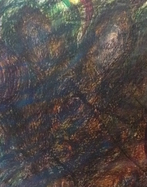圏 $\mathscr{C}$ における図式 $D : \mathscr{I} \rightarrow \mathscr{C}$ の余極限は, 圏 $\mathscr{C}^{\mathrm{op}}$ における図式 $D : \mathscr{I} \rightarrow \mathscr{C}^{\mathrm{op}}$ の極限に等しい.
極限の定義には, 可換錐
\begin{equation*}
\newcommand{\Ar}[1]{\mathrm{Ar}(#1)}
\newcommand{\ar}{\mathrm{ar}}
\newcommand{\arop}{\Opp{\mathrm{ar}}}
\newcommand{\Cocone}[2]{\mathrm{Cocone}(#1,#2)}
\newcommand{\Colim}{\mathrm{colim}}
\newcommand{\CommaCat}[2]{(#1 \downarrow #2)}
\newcommand{\Cone}[2]{\mathrm{Cone}(#1,#2)}
\newcommand{\Func}[2]{\mathrm{Func}(#1,#2)}
\newcommand{\Hom}{\mathrm{Hom}}
\newcommand{\Id}[1]{\mathrm{id}_{#1}}
\newcommand{\Mb}[1]{\mathbf{#1}}
\newcommand{\Mr}[1]{\mathrm{#1}}
\newcommand{\Ms}[1]{\mathscr{#1}}
\newcommand{\Nat}[2]{\mathrm{Nat}(#1,#2)}
\newcommand{\Ob}[1]{\mathrm{Ob}(#1)}
\newcommand{\Opp}[1]{{#1}^{\mathrm{op}}}
\newcommand{\Pos}{\mathbf{Pos}}
\newcommand{\q}{\hspace{1em}}
\newcommand{\qq}{\hspace{0.5em}}
\newcommand{\Rest}[2]{{#1}|{#2}}
\newcommand{\Sub}{\mathrm{Sub}}
\newcommand{\Src}{d^{0,\mathrm{op}}}
\newcommand{\Tgt}{d^{1,\mathrm{op}}}
\Cone{-}{D} : \Opp{\Ms{C}} \longrightarrow \Mb{Set}
\end{equation*} の概念が使用されている. 可換錐の定義を挙げておく.
定義: 可換錐.$\,$ $W$ を圏 $\Ms{C}$ の任意の対象, $D : \Ms{I} \rightarrow \Ms{C}$ を $\Ms{C}$ 内の任意の図式とする. $\alpha : W \rightarrow D$ を $W$ に値をとる定図式から図式 $D$ への自然変換とする. すなわち, $\Ms{I}$ における任意の射 $e : i \rightarrow j$ に対して図式
\begin{equation*}
\begin{xy}
\xymatrix@=24pt {
~ & & D(i) \ar[dd]^{D(e)} \\
W \ar[urr]^{\alpha(i)} \ar[drr]_{\alpha(j)} && ~ \\
~ & & D(j)
}
\end{xy}
\end{equation*} が可換になる. このような $\alpha$ を $W$ を頂点とする図式 $D$ 上の可換錐 (commutative cone)と呼ぶ.
一方, 余極限の定義には可換錐 (commutative cone) を逆圏で考えた可換余錐 (commutative cocone) の概念を用いる. 逆圏で可換錐を考えるので射の向きが逆になる.
定義: 可換余錐.$\,$ $D : \Ms{I} \rightarrow \Ms{C}$ を $\Ms{C}$ 内の任意の図式, $W$ を圏 $\Ms{C}$ の任意の対象とする. $\alpha : D \rightarrow W$ を図式 $D$ から $W$ に値をとる定図式への自然変換とする. すなわち, 各 $\Ms{I}$ における任意の射 $e : i \rightarrow j$ に対して図式
\begin{equation*}
\begin{xy}
\xymatrix@=24pt {
D(i) \ar[dd]_{D(e)} \ar[drr]^{\alpha(i)} & & \\
~ && W \\
D(j) \ar[urr]_{\alpha(j)} & & ~
}
\end{xy}
\end{equation*} が可換になる. このような $\alpha$ を図式 $D$ から頂点 $W$ への可換余錐 (commutative cocone)と呼ぶ.
図式 $D$ から頂点 $W$ への可換余錐全体からなる集合を
\begin{equation*}
\Cocone{D}{W}
\end{equation*} と表わす. このとき, $\Ms{C}$ の任意の射 $h : W \rightarrow W'$ は $\Cocone{D}{W}$ から $\Cocone{D}{W'}$ への射
\begin{alignat*}{2}
\Cocone{D}{h} : \Cocone{D}{W} & \,\longrightarrow\qq & \Cocone{D}{W'} \\
\alpha \hspace{8mm} & \,\longmapsto\qq & h \circ \alpha \hspace{6mm}
\end{alignat*} を与える. これによって $\Cocone{D}{-} : \Ms{C} \longrightarrow \Mb{Set}$ は関手となる.
極限の定義を復習しておく.
定義: 極限.$\,$ 圏 $\Ms{C}$ において, 関手 $\Cone{-}{D} : \Opp{\Ms{C}} \rightarrow \mathbf{Set}$ に対する普遍元が存在するとき, それを $\Ms{C}$ における図式 $D$ の極限 (limit)と呼び
\begin{equation*}
\lim\, D
\end{equation*} によって表わす.
余極限の定義は, この定義を逆圏において考え, 可換錐の代わりに可換余錐を用いて与えられる.
定義: 余極限.$\,$ 圏 $\mathscr{C}$ において, 関手 $\Cocone{D}{-} : \Ms{C} \rightarrow \Mb{Set}$ に対する普遍元が存在するとき, それを $\Ms{C}$ における図式 $D$ の余極限 (colimit)と呼び
\begin{equation*}
\Colim\, D
\end{equation*} によって表わす.
極限の場合と同様に, 圏 $\Ms{C}$ の図式 $D : \Ms{I} \rightarrow \Ms{C}$ が常に余極限を持つわけではないが, 米田の補題により関手 $\Cocone{D}{-} : \Ms{C} \rightarrow \Mb{Set}$ について自然な同型
\begin{equation*}
\Nat{\Hom_{\Ms{C}}(V, -)}{\Cocone{D}{-}} \stackrel{\sim}{\longrightarrow} \Cocone{D}{V}
\end{equation*} が成立する. さらに普遍元が存在するのは, $\Nat{\Hom_{\Ms{C}}(V, -)}{\Cocone{D}{-}}$ に属する自然同型
\begin{equation*}
\lambda : \Hom_{\Ms{C}}(V, -) \stackrel{\sim}{\longrightarrow} \Cocone{D}{-}
\end{equation*} が存在して, 各対象 $W \in \Ob{\Ms{C}}$ に対して同型写像
\begin{alignat*}{2}
\lambda W : \Hom_{\Ms{C}}(V, W) & \qq\stackrel{\sim}{\longrightarrow}\qq & \Cocone{D}{W} \hspace{40mm} \\
(h : V \rightarrow W) & \qq\longmapsto\qq & (\Cocone{D}{h} : \Cocone{D}{V} \rightarrow \Cocone{D}{W} \,;\, \alpha \mapsto h \circ \alpha)
\end{alignat*} が定まる場合である. このとき
\begin{equation*}
\Colim\, D = \lambda V(\Id{V}) \in \Cocone{D}{V}
\end{equation*} が成り立つ. $(\beta : D \rightarrow V) = \lambda V(\Id{V})$ とおくと
\begin{equation*}
\Colim\, D = (\beta : D \rightarrow V)
\end{equation*} である.
普遍元を特徴付ける必要十分条件を用いると, この余極限は次の性質を満たす.
任意の $W \in \Ob{\Ms{C}}$ と, 任意の $D$ から $W$ への可換余錐 $(\alpha : D \rightarrow W) \in \Cocone{D}{W}$ に対して, $\Ms{C}$ の射 $u : V \rightarrow W$ で
\begin{align*}
(\alpha : D \rightarrow W) &= (\Cocone{D}{-}(u : V \rightarrow W))(\beta : D \rightarrow V) \\
&= \Cocone{D}{u}(\beta) \\
&= (u \circ \beta : D \rightarrow W)
\end{align*} を満たすものが一意的に存在する. すなわち, 図式
\begin{equation*}
\begin{xy}
\xymatrix@=48pt {
D \ar[dr]_{\alpha} \ar[r]^{\beta} & V \ar[d]^{u} \\
~ & W
}
\end{xy}
\end{equation*} を可換にするような $\Ms{C}$ の射 $u : V \rightarrow W$ が一意的に存在する.
各 $W \in \Ob{\Ms{C}}$ に対して, 上記の自然同型 $\lambda : \Hom_{\Ms{C}}(V, -) \rightarrow \Cocone{D}{-}$ の逆変換 $\lambda^{-1}W : \Cocone{D}{W} \rightarrow \Hom_{\Ms{C}}(V, W)$ は, 各可換余錐 $\alpha : D \rightarrow W$ に対して,
\begin{equation*}
\Cocone{D}{h}(\beta) = u \circ \beta = \alpha
\end{equation*} を満たす一意的に定まる射 $(u : V \rightarrow W) \in \Hom_{\Ms{C}}(V, W)$ を対応させるものである. すなわち
\begin{equation*}
\lambda^{-1}W(\alpha) = u.
\end{equation*}
次の文章では, 具体的な図式の余極限の例をいくつか挙げる.
【このカテゴリーの最新記事】
-
no image
-
no image
-
no image
-
no image
-
no image
